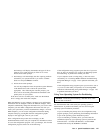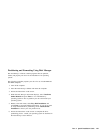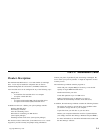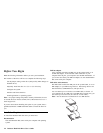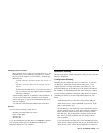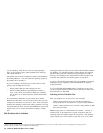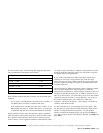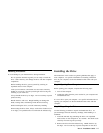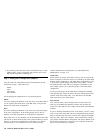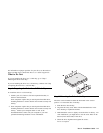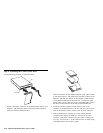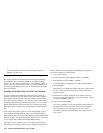
file uses one full cluster. The following table shows how the cluster
size is incremented as the partition size increases.
16
These examples illustrate the effect of cluster size on hard disk space
allocation.
If you create a 2.14 GB partition, each disk cluster is 32 KB.
17
A
one KB file takes one cluster or 32 KB of disk space.
If the partition size is 1.00 GB, the cluster size is 16 KB. A one
KB file takes one cluster or 16 KB of disk space. A normal mix
of application and data files can include thousands of small files.
Smaller partitions (cluster sizes) save hard disk capacity, particularly
when the partition contains many small files. However, when a large
file is placed in small partitions, the file must be spread over many
clusters, causing it to be fragmented (scattered around the disk) which
can result in slower performance. Therefore, small partitions are well
suited for small files while large clusters are well suited to large files
for optimal capacity and performance.
If you replace a hard disk drive with a much larger capacity drive,
normally you will create a larger partition size on the new drive.
When you copy files from a smaller partition to a larger partition, the
same files require surprisingly more space on the disk because of the
increased cluster size.
The latest releases of Microsoft operating systems, originally available
only to systems manufacturers, have an option for a 32-bit file
allocation table called FAT32. FAT32 supports partitions as large as 2
terrabytes (2,048 GB) and cluster sizes of 4 KB for partitions up to 8
GB. If you have FAT32, you will be able to set up your drive without
concern for partition size limits or storage efficiency. To tell if you
have FAT32 installed, select your existing drive under "My
Computer" and choose "Properties". The "General" tab should say
"FAT32" under the drive label.
For more information, see your operating system user's guide. Also,
the Disk Manager Online Manual contains information about clusters
and how to assign hard disk drive partitions. To open the Disk
Manager manual from the DOS prompt, type A: and press Enter to
go to the A: prompt, insert the Disk Manager Diskette, type dm/h, and
press Enter.
Partition Size Cluster Size (FAT-16)
0 MB - 16MB 4 KB
16 MB - 128 MB 2 KB
128 MB - 256 MB 4 KB
256 MB - 512 MB 8 KB
512 MB - 1 GB 16 KB
1 GB - 2 GB 32 KB
17
When referring to hard-disk-drive capacity, KB means 1000 bytes; total user-accessible capacity may vary depending on the operating environment.
Part 2: Installation Guide 2-5



